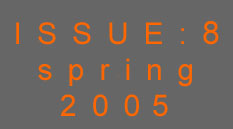 |
 |
Issue No.8 Spring
|
| ENS News |
| ENS Events |
| Member Societies & Corporate Members |
YGN Report |
| European Institutions |
| ENS World News |
ENS Members |
| Links to ENS Member
Societies Links to ENS Corporate Members Editorial staff ______________________ |
  |
| _____________________ |
|
|
|
|
|
|
This study, the seventh of its kind since 1983, has been published at a particularly opportune moment, with energy at the top of the political agenda in many countries. It was carried out by an ad hoc group of officially appointed national experts in 19 OECD member countries and 3 non-member countries. Their main brief was to calculate the estimated generation costs of electricity produced by 130 power plants, including coal-fired, gas-fired, nuclear, hydro, solar and wind plants. The technologies analysed are either those used today or those considered by the participating countries to be likely candidates for commissioning by 2010-2015. Thirteen of the plants in question were nuclear plants. |
The calculations are based on the same reference methodology used in the six previous studies, i.e. the "levelised lifetime cost" approach. The main costs analysed were the "overnight construction cost" (which is defined as the total cost for building the plant as if it were all paid in one go), the "operational and maintenance costs" and the "levelised costs."
For the 13 nuclear plants included in the study, the overnight construction cost varied between $1000 and $2000 per kWe, which is the same as the estimated cost for most wind plants. This compares with between $1000 and $1,500 per kWe for most coal-fired plants. After analysing the cost ratios for different types of power plants the study concludes that nuclear is cheaper than coal by 10% or more in 7 countries and cheaper than gas by 10% in nine countries.
Among the wealth of data provided is a comparative analysis of the cost ratios for coal, gas and nuclear at discount rates of 5% and 10%. Ten countries (Canada, the Czech Republic, France, Germany, Japan, the Republic of Korea, South Africa, Slovakia, Turkey and the US) submitted data for coal and gas power plants. Ten countries (Canada, the Czech Republic, Finland, France, Germany, Japan, the Republic of Korea, Romania, Slovakia and the US) provided data for coal and nuclear power plants. Finally, 10 countries (Canada, the Czech Republic, France, Germany, Japan, the Republic of Korea, the Netherlands, Slovakia, Switzerland and the US) provided data for gas and nuclear power plants. At the 5% discount rate nuclear is 10% (or more) cheaper than coal in 7 out of 10 countries, and 10% (or more) cheaper than gas in 9 out of the ten countries.
At the 10% discount rate, nuclear is more than 10% cheaper than coal in Canada, the Czech Republic, France, Slovakia and in two pants in Germany. In Canada, the Czech Republic, France, Germany, the Netherlands, Slovakia, the Republic of Korea and in two plants in Switzerland nuclear is more than 10% cheaper than gas.
The study shows that there is no clear-cut winner among alternative generation sources. However, nuclear is very competitive because of its decreasing fuel cycle costs and low operation and maintenance costs.
Clearly, decision-makers and potential investors will need to take other factors into consideration too before assessing overall cost. Security of energy supply, for example, remains a major concern for most governments and private investors.
It is likely to influence future governments' energy investment policies. Similarly, environmental policy is playing an increasingly important role. This will probably influence fossil fuel prices and force investors to act accordingly. Both economically and environmentally, nuclear scores well and offers a cost-effective option.
The study concludes by saying that "...on
a global scale there is room and opportunity for all efficient
generating technology."
The study, which includes an appendix with comparative country
statements, can be ordered online at http://www.iaea.org.
| |



